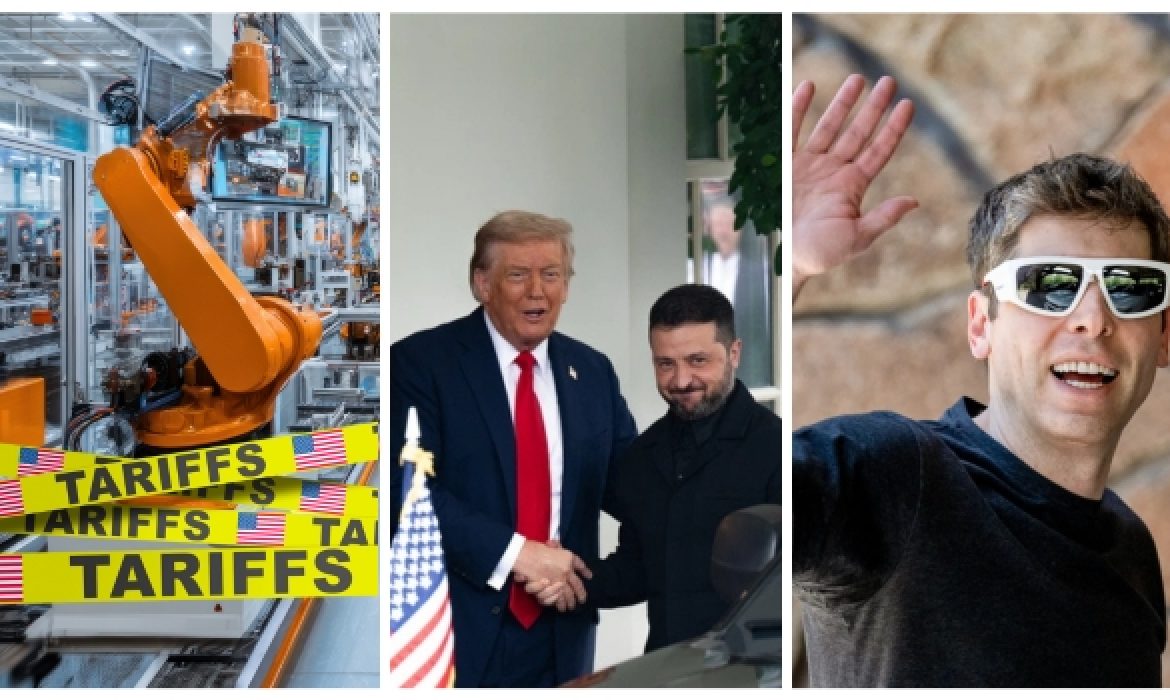
Date Issued – 25th September 2025
Courtesy of the Research Department at Balfour Capital Group
Key Points
- U.S. Expands Section 232 Probes: The Biden administration is now investigating robotics and medical device imports, raising tariff risks for the auto industry, hospitals, and broader supply chains.
- Defense Stocks Rally Globally: European, Asian, and U.S. defense stocks surged after Trump backed Ukraine’s full territorial reclamation, fueling expectations of continued military support.
- Funds Flow Back to U.S. Equities: Global investors are returning to U.S. markets on AI optimism and anticipated Fed rate cuts, reversing months of outflows.
- Nvidia’s $100B OpenAI Deal: Nvidia’s investment in OpenAI reflects soaring AI infrastructure demand but raises sustainability concerns due to circular financing dynamics.
U.S. Probes Robotics and Medical Imports, Tariff Risks Rise
The U.S. administration has expanded its Section 232 national security probes to cover imports of robotics, industrial machinery, and medical devices, raising the prospect of fresh tariffs on a wide range of products from surgical masks to pacemakers.
The move highlights Washington’s push to reduce reliance on foreign supply chains, particularly from China and Mexico, which together supply over one-third of U.S. machinery imports. Potential levies could disrupt the auto sector, heavily dependent on imported industrial robots, and increase costs for hospitals and patients reliant on foreign-made medical equipment, intensifying pressure on healthcare budgets and taxpayer-funded programs.
Defense Stocks Rally on Trump’s Support for Ukraine Victory
Global defense stocks rallied after President Trump signaled that Ukraine could regain all occupied territory with NATO and EU support, marking a sharp shift from earlier calls for territorial concessions.
European names led gains, with Renk up 6.5%, Hensoldt nearly 6%, and Leonardo and Saab advancing over 3.5%. South Korean defense firms also rose 2–5%, while U.S. peers Lockheed Martin, RTX, and Northrop Grumman gained more than 1%. The sector’s outperformance reflects renewed expectations of sustained military support for Kyiv and heightened security commitments across NATO, reinforcing investor focus on defense as a structural growth theme amid ongoing conflict.
Global Investors Return to U.S. Assets on AI and Fed Cuts
Global investors are returning to U.S. assets after months of outflows, driven by optimism over Fed rate cuts and sustained AI momentum. U.S. equities gained 7% last quarter, outpacing European benchmarks, while fund inflows into U.S. stocks reached a year-to-date high of $58 billion last week.
The reversal follows record selling earlier this year amid tariff concerns, underscoring Wall Street’s resilience. Small caps are attracting renewed interest as beneficiaries of lower rates, while Treasuries also regained favor with yields easing. Still, some managers caution that AI-driven gains echo the late-1990s tech bubble, warning of medium-term valuation risks.
Nvidia’s $100B OpenAI Deal Raises Sustainability Questions
Nvidia’s up to $100 billion investment in OpenAI will largely be recycled into leasing Nvidia’s own GPUs, intertwining equity funding with revenue generation. The structure allows OpenAI to spread costs over several years while Nvidia secures long-term demand for its chips, central to AI model training and deployment.
The arrangement underscores Nvidia’s dominance in AI infrastructure but has raised investor concerns about the circular nature of the deal and the sustainability of AI-driven growth. While partners like Oracle provide additional financing, the reliance on equity and debt to fund massive data center buildouts highlights risks in the capital-intensive AI ecosystem.
Conclusion
Markets are recalibrating as trade policy, geopolitical dynamics, and technology investment shape the near-term outlook. Washington’s expanded Section 232 probes highlight rising tariff risks across critical sectors, with potential implications for healthcare and manufacturing costs.
Defense equities outperformed on expectations of sustained NATO support for Ukraine, while global fund flows shifted back toward U.S. assets, driven by AI strength and easing rate expectations.
Nvidia’s landmark investment in OpenAI underscores structural demand for AI infrastructure but raises questions about sustainability. Investors face a landscape defined by tariff uncertainty, defense rearmament, and capital-intensive technology growth requiring careful portfolio positioning.
Investment Insights
- Monitor Exposure to Tariff-Sensitive Sectors: Heightened U.S. tariff risks call for monitoring exposure to autos, healthcare, and supply chains reliant on China and Mexico.
- Defense Equities Supported by Geopolitics: Defense equities remain supported by geopolitical commitments, offering potential for structural growth in Europe, Asia, and the U.S.
- AI-Driven U.S. Equity Resilience: Renewed U.S. equity inflows highlight resilience of AI-driven sectors, though valuations warrant selective positioning.
- Nvidia Deal Highlights Infrastructure Demand: Nvidia’s OpenAI deal reinforces long-term demand for AI infrastructure, but investors should remain cautious of circular financing risks.
Economic Calendar
| Date | Event | Why It Matters |
|---|---|---|
| September 25, 2025 | U.S. Initial Jobless Claims | Weekly snapshot of labor market strength, key for Fed policy expectations. |
| September 26, 2025 | U.S. Durable Goods Orders & Factory Orders | Measures business investment and demand for capital goods, influencing growth outlook. |
| September 29, 2025 | U.S. Personal Consumption Expenditure (PCE) Price Index | Fed’s preferred inflation gauge; pivotal for interest rate trajectory. |
| September 30, 2025 | U.S. Advance GDP & Chicago PMI | Provides Q3 growth snapshot and business activity momentum. |
| October 2, 2025 | U.S. Initial Jobless Claims | Continuation of labor market monitoring, important for gauging economic resilience. |
| Early October 2025 | Eurozone Manufacturing & Services PMI | Key barometer of Eurozone growth momentum and ECB policy outlook. |
Disclaimer: This newsletter provides financial insights for informational purposes only. It does not constitute financial advice or recommendations for investment decisions.




